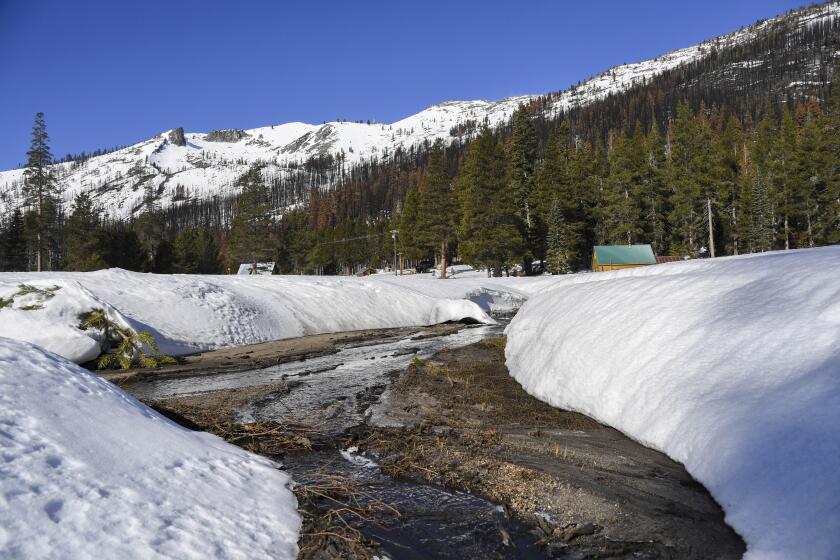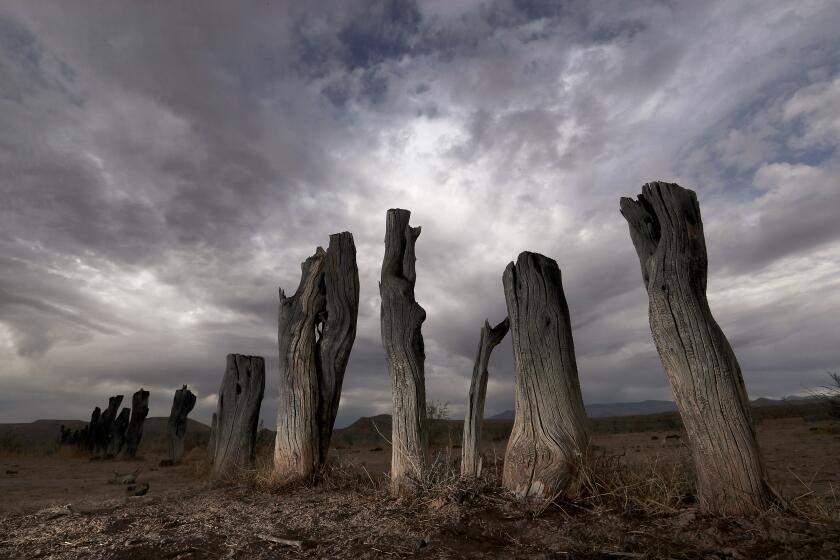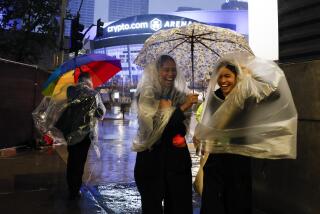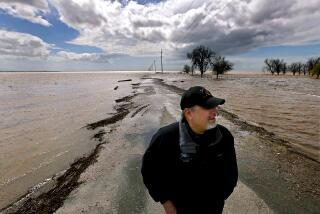California drought continues after state has its driest January and February on record
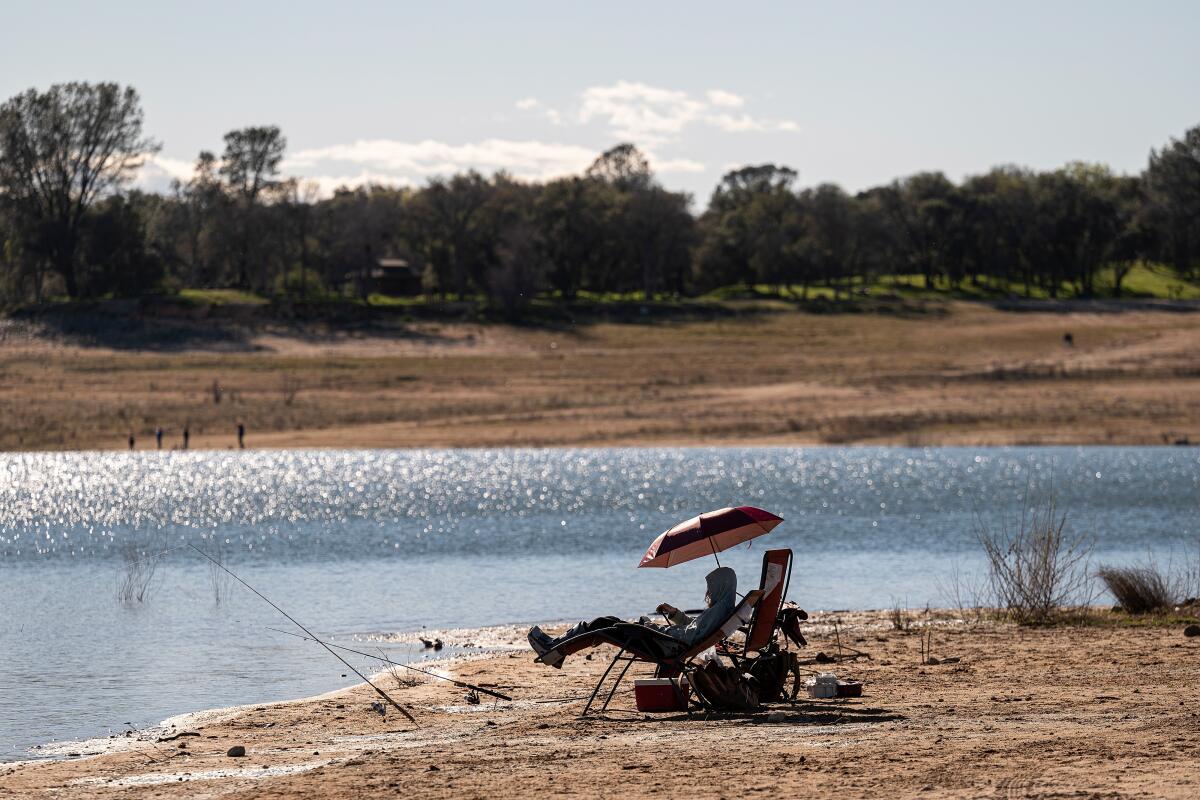
- Share via
The months of January and February were the driest ever recorded in most of California this year, and state water officials are now sounding the alarm for a third year of severe drought, shrinking water supplies and the growing threat of extreme wildfire.
The California Department of Water Resources announced Tuesday that statewide snowpack had dwindled to 63% of average for this time of year, following an extraordinarily dry start to the year.
That sobering assessment came during the third snowpack survey of the season at Phillips Station near South Lake Tahoe. The reading marked a tumble from the initial survey at the end of December — when statewide snowpack measured 160% of average — and from the second survey last month, when it measured 92% of average.
“That is not enough to fill up our reservoirs,” said Sean de Guzman, the DWR’s manager of snow surveys. “Without any significant storms on the horizon, it’s safe to say we’ll end this year dry and extend this drought a third year.”
California’s water year runs from Oct. 1 to Sept. 30. De Guzman said the last two months marked the driest consecutive January and February on record in the Sierra Nevada.
After one of California’s driest Januarys on record, statewide snowpack dwindled to 92% of average for this time of year, officials announced Tuesday.
The findings are particularly worrisome because those months are typically the crux of California’s wet season. Traditionally, Sierra snowpack serves as a natural reservoir, providing California with about a third of its water.
Snowpack at Phillips Station was 68% of average for this time of year, with a snow water equivalent of 16 inches, de Guzman said. But it’s not only the Sierra that is feeling the dryness.
During a State Water Resources Control Board meeting Tuesday, Deputy Director Erik Ekdahl compared January and February’s precipitation in the Central Valley to that of other critically dry years in California history. Even in the drought years of 1976-77, the Central Valley gained about 15 inches of precipitation during those months, he said. In 2013, that number was 7.5 inches. This year, it’s 2.4 inches.
“It is the driest January-February time frame by far in California’s more than 100 years of records, almost by an order of four,” Ekdahl said. “We’re starting in a pretty bad spot.”
In fact, nearly every part of the state has seen below-average precipitation this year, with many areas seeing almost no moisture at all.
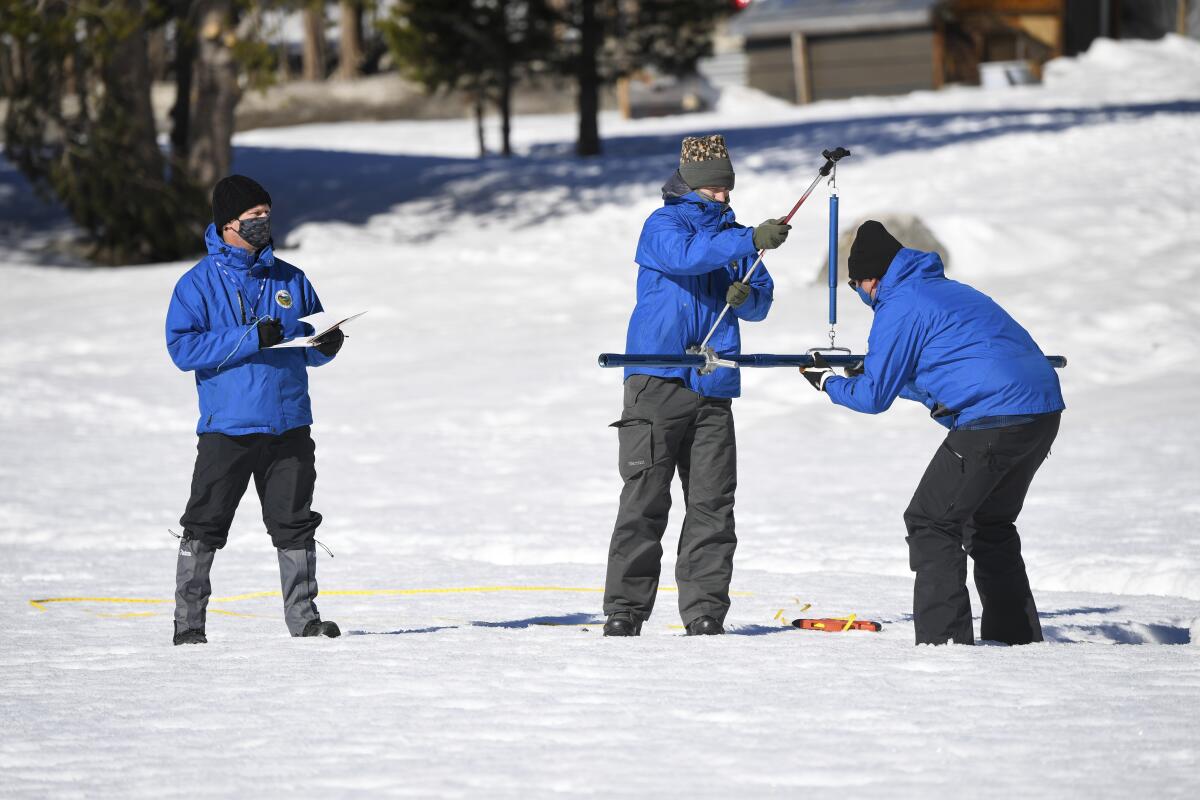
National Weather Service meteorologist Drew Peterson said San Francisco recorded its driest January and February ever, with a scant 0.65 inches of precipitation over the last two months. The Eight-Station Northern Sierra Index, a collection of weather stations in Northern California, picked up 1.74 inches, also its driest January-February stretch.
“For many locations, it’s the driest since records began,” Peterson said.
What’s more, the Sacramento area on Tuesday was poised to break its record for the longest stretch of dry weather during the wet season — 53 consecutive days without rain, officials said.
The Los Angeles area fared slightly better, with a quarter-inch in January and February. But that was still only 4% of normal, and the fourth driest start to the year since records began in 1877.
“It’s way below normal,” said David Sweet, a meteorologist with the weather service in Oxnard. “February is typically our wettest month of the year, and we got 0.06 inches — it’s pathetic.”
The West is experiencing its most severe megadrought in a millennium, according to a new study. Scientists say climate change is playing a major role.
The bone-dry months follow the driest 22-year period to grip the American Southwest in 1,200 years — a megadrought that researchers say has been greatly intensified by climate change and the release of greenhouse gasses.
Many have warned that the hazards are only likely to get worse, with a landmark United Nations climate report this week outlining a future of more intense drought, wildfire and heat waves — among other consequences — unless nations take urgent action.
The current dry spell has already hit the state’s reservoirs hard. Lake Shasta, California’s largest reservoir, is now at 37% of its average capacity for this time of year, according to state data. The second-largest reservoir, Oroville, was at 47%.
The numbers could potentially affect water supplies in the state. Water suppliers in Southern California have already been told to expect just 15% of their full allocations this year from the State Water Project, and the federal government has put the Central Valley on alert that it could receive minimal-to-no water from the U.S. Bureau of Reclamation.
“With only one month left in California’s wet season and no major storms in the forecast, Californians should plan for a third year of drought conditions,” DWR Director Karla Nemeth said in a statement. “A significantly below-average snowpack combined with already low reservoir levels make it critical that all Californians step up and conserve water every day to help the state meet the challenges of severe drought.”
The dryness also spells trouble for California wildfires. Already this year, dry vegetation and strong winds have contributed to a handful of unseasonably early conflagrations.
Peterson, the meteorologist, said the parched start to the year has only dried vegetation further.
“All we’ve done with this very wet start and then dry end to the water year is provide more fuel for that fire,” he said.
A fourth snowpack survey will be conducted March 30.
“We are well below normal conditions,” de Guzman said. “Barring any unforseen ‘miracle March,’ which we don’t actually see coming, we’ll end this year below average.”
While some parts of the state, including Los Angeles, are slated to see some rain later this week, the latest monthly precipitation outlook from the National Oceanic and Atmospheric Administration offers no promise of measurable moisture in California in the weeks ahead.
More to Read
Sign up for Essential California
The most important California stories and recommendations in your inbox every morning.
You may occasionally receive promotional content from the Los Angeles Times.
